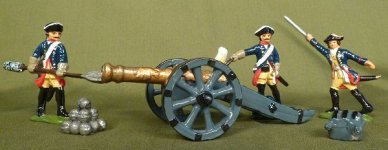My first posting, happy to have finally found a place where i can actually post my question and hopefully share information.
I'm an active modeller: military in plastics, resin and (after having not done so in 20 years) tin casting. The latter is unfortunately a rather obscure activity as it's hard to find a lot of info on the web.
What i'm busy with is trying to cast a canon using my old Nurnberger Meisterzinn mould (aluminium alloy mold, as opposed to rubber moulds like the ones from Prince August or Zinnbrigade). For some reason it just doesn't want to work out, metal doesn't flow into the whole of the mould. Does anyone have any idea on how to improve this? Should i drill little airholes in it? Or heat the thing (and how)?
Thanks!
Jeroen
the Netherlands
I'm an active modeller: military in plastics, resin and (after having not done so in 20 years) tin casting. The latter is unfortunately a rather obscure activity as it's hard to find a lot of info on the web.
What i'm busy with is trying to cast a canon using my old Nurnberger Meisterzinn mould (aluminium alloy mold, as opposed to rubber moulds like the ones from Prince August or Zinnbrigade). For some reason it just doesn't want to work out, metal doesn't flow into the whole of the mould. Does anyone have any idea on how to improve this? Should i drill little airholes in it? Or heat the thing (and how)?
Thanks!
Jeroen
the Netherlands


